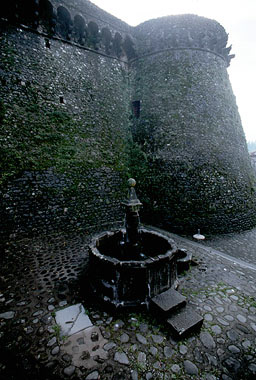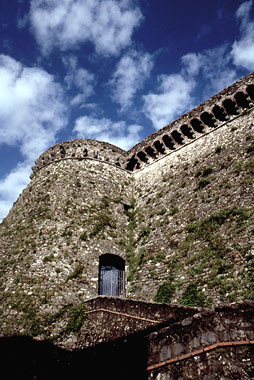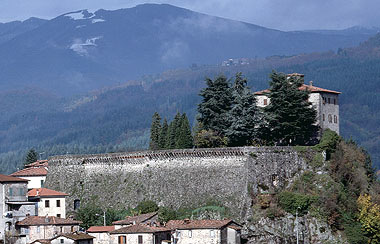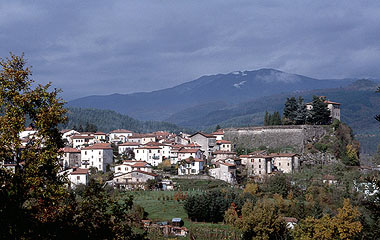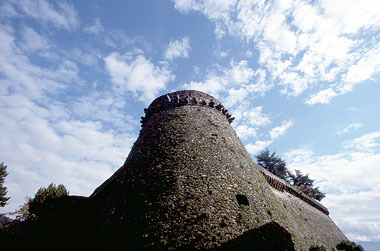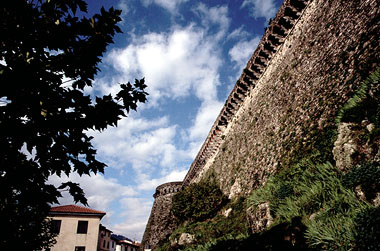Rocca of Camporgiano

Information
Address:
Via della Rocca 2, 55031 Camporgiano (LU)
Foundation:
The fortified complex dates back to the Middle Ages.
District/Location:
Camporgiano
District:
Garfagnana

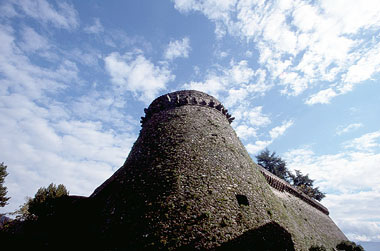
The rocca of Camporgiano is on a high rock overlooking one of the historically most important sections of the road network in the upper Serchio valley. It is closely connected and within sight of the fortress of Verrucole guarding the other road on the further bank of the river.
The fortification has an irregular quadrangular plan and the walls have two massive conical towers that represent the most important and characteristic part of the fortifications; the walls in local roughly hewn stone are crowned by a patrol balcony jutting out of the wall. The fort has only one gate with a small guardhouse, on the north-western side.
Inside the walls we can still see the base of the bell tower of the Romanesque San Sisto church and some portions of the medieval walls that represented the most ancient core of the fortification brought to light during a recent excavation campaign.
The complex owed its strategic relevance both to the solidity of its construction and to its position; however, with the political changes and the period of non-belligerence from the beginning of the XVIIth century onwards in the upper Serchio valley, the Rocca lost its strategic importance and retained only administrative functions. The whole complex then passed into private hands and only the large building on the Rocchetta was refurbished and converted into a house; this was the situation until 1920 when, owing to a devastating earthquake, many buildings were abandoned, their ruins pulled down and a new village was constructed in their place.
The fortification has an irregular quadrangular plan and the walls have two massive conical towers that represent the most important and characteristic part of the fortifications; the walls in local roughly hewn stone are crowned by a patrol balcony jutting out of the wall. The fort has only one gate with a small guardhouse, on the north-western side.
Inside the walls we can still see the base of the bell tower of the Romanesque San Sisto church and some portions of the medieval walls that represented the most ancient core of the fortification brought to light during a recent excavation campaign.
The complex owed its strategic relevance both to the solidity of its construction and to its position; however, with the political changes and the period of non-belligerence from the beginning of the XVIIth century onwards in the upper Serchio valley, the Rocca lost its strategic importance and retained only administrative functions. The whole complex then passed into private hands and only the large building on the Rocchetta was refurbished and converted into a house; this was the situation until 1920 when, owing to a devastating earthquake, many buildings were abandoned, their ruins pulled down and a new village was constructed in their place.
Via della Rocca, 2, 55031 Camporgiano LU
Inside the walls of the tower facing the square we find several charming vaulted rooms, in origin soldiers' quarters, where now the Town Collection of Renaissance Ceramics is housed; this pottery was found within the fortress, inside wells used as dumps, during a campaign of excavations and archaeological probes. The fortress as well as the houses and the medieval church of S. Sisto inside its walls were seriously damaged during the 1920 earthquake. Subsequently the ruined buildings were completely pulled down and only on the very top one of the old buildings was reconstructed and extended for use as a private house. The fortified complex is now in good condition since the recent consolidation and restoration of part of the walls has stopped the structure's decay.
Scopri altre attrazioni vicino a Rocca of Camporgiano
See allYou may also like..
See allFind more
0








